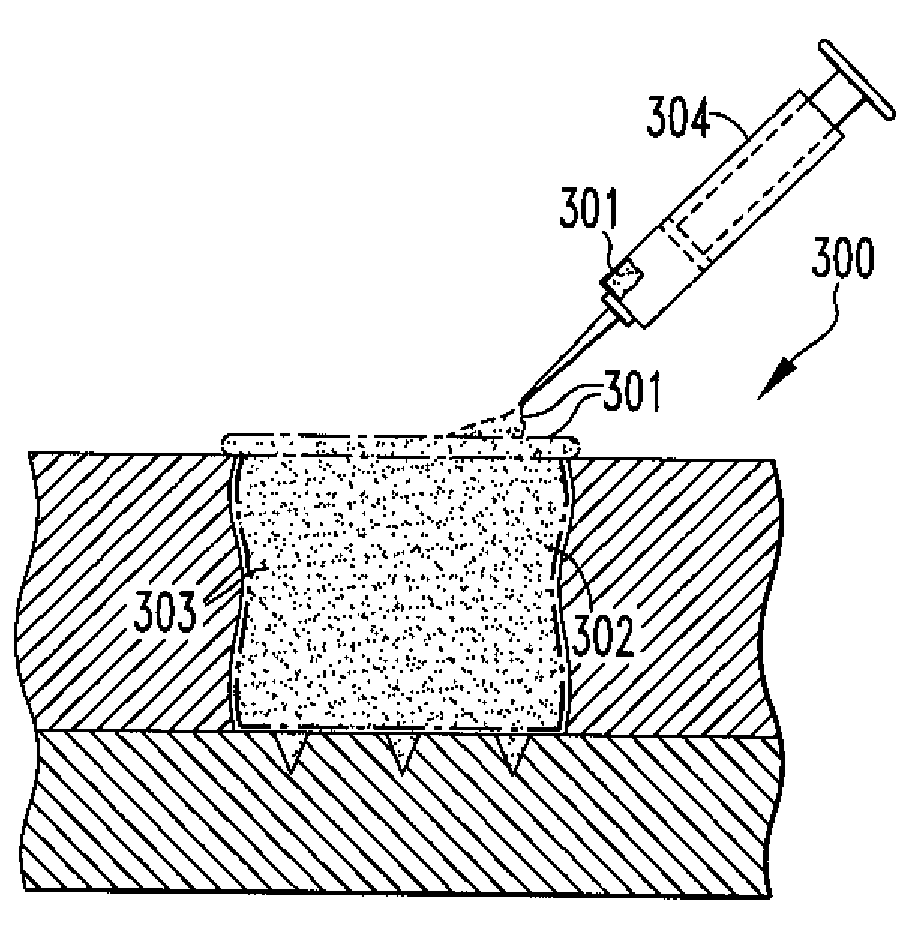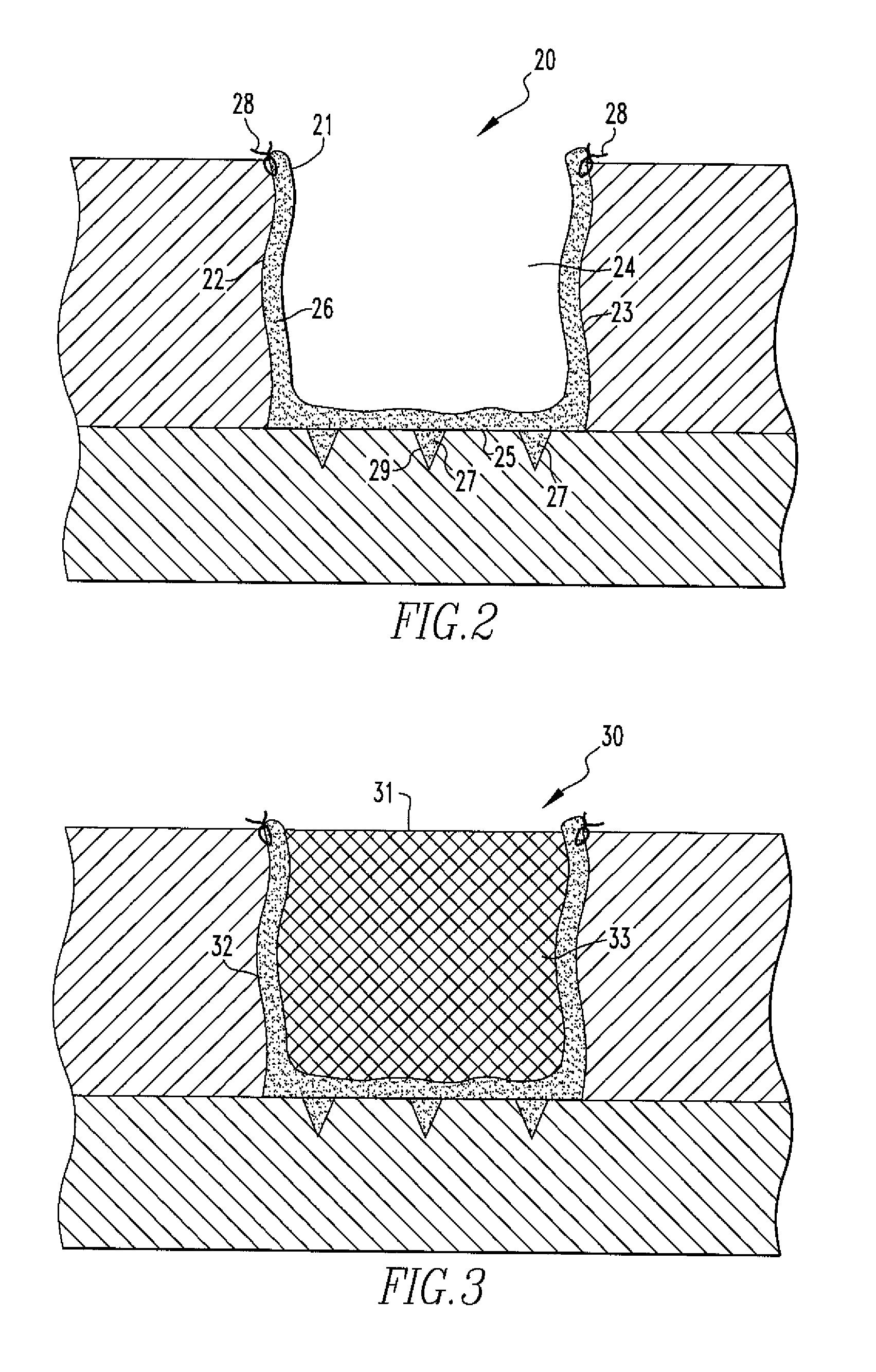Methods of Regenerating Cartilage
a cartilage surface and cartilage technology, applied in the direction of biocide, unknown materials, drug compositions, etc., can solve the problems of deterioration, deformation, and difficulty in repair of cartilage lesions, and achieve the effect of not delay or prevent further deterioration of cartilage surfa
- Summary
- Abstract
- Description
- Claims
- Application Information
AI Technical Summary
Problems solved by technology
Method used
Image
Examples
example
[0052]Bone marrow aspirate was harvested from an allogeneic donor goat. A bone marrow stromal cell (BMSC) fraction was obtained following plastic adherence of the cells and subsequent culture expansion was performed using standard culture conditions (37° C. / 5% CO2) and medium (alpha-MEM / 10% FCS). Cells were passaged on reaching 80% confluence (up to P3) and cryopreserved prior to use.
[0053]Treatment recipient goats, approximately 2.5 years old and 50-90 kg were used in the study. X-ray analysis confirmed normal bone mineral density. Micro fracture was performed on each goat (Group 1: N=3 micro fracture only, Group 2: N=3 micro fracture plus cell injection) as follows: A single annular defect (about 8 mm diameter) was generated in the medial femoral condyle of the stifle joint at a depth equivalent to the subchondral bone layer. A chondral pick (about 1 mm diameter) and mallet was used to perform the micro fracture procedure (about 3 mm depth, average of 7 holes per defect). After wo...
PUM
 Login to View More
Login to View More Abstract
Description
Claims
Application Information
 Login to View More
Login to View More - R&D
- Intellectual Property
- Life Sciences
- Materials
- Tech Scout
- Unparalleled Data Quality
- Higher Quality Content
- 60% Fewer Hallucinations
Browse by: Latest US Patents, China's latest patents, Technical Efficacy Thesaurus, Application Domain, Technology Topic, Popular Technical Reports.
© 2025 PatSnap. All rights reserved.Legal|Privacy policy|Modern Slavery Act Transparency Statement|Sitemap|About US| Contact US: help@patsnap.com



